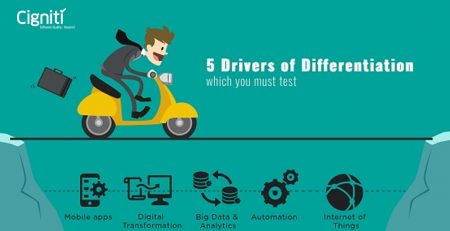Testing Early and Testing Frequently – A Business Critical strategy
|
Listen on the go!
|
Have you come across the phrase ‘Vote Early, Vote Often’? As stated on Wikipedia, this phrase was introduced in the United States around the mid-19th century, specifically, in the context of elections and voting trends. The dual purpose was to get the voters to come ‘early’ and cast their vote and keep extending their duties as ‘often’ as possible. This scenario resonates with the idea of ‘Testing Early and Testing Frequently’, especially, in an Agile set-up, where the release cycles are shorter and testing needs to cope up with the speed.
An effective Test Automation strategy makes early testing and frequent testing much faster and relevant for the teams. The business objective is to bring down the risks related to potential software glitches and identify the risks way ahead in the testing and development cycle. This will help teams to reduce the higher costs, time, as well as resources that they would need in the future to fix the gaps in the software or the application.
Even from a business perspective, Early and Frequent Testing holds significance and definite relevance.
Why is Testing Early and Testing Frequently a business critical strategy?
Needs and Threats around Digital Transformation have given way to this constant requirement to speed up the testing cycle. Hence, a lot of emphasis is laid on enhancing the software testing cycle.
1. Balancing the Performance Act
Performance is key for every business and every application. It’s a factor that needs to mature with time and technology upgrade. Automation helps to further speed up and secure the testing process not just by ensuring velocity, but also by validating quality at every stage. It helps to plug in continuous integration within the system, with a robust automation suite to maximize test coverage and ensure quality.
When automation is plugged within performance testing, it helps to materialize the idea of testing early and through frequent cycles. Thus, bringing in added agility to the testing and development course.
2. Gauging Security Threats
Cybersecurity threats are growing each day, and practically, each phase of digital proliferation brings forth a new threat. It is absolutely critical to identify these threats during the initial phase of application development. This not only helps to cut down the time and efforts, but also ensures that your business application is robust and ready for the fluctuating user environments. The digital space is infested with viruses, cyber risks, and all kinds of security attacks. This makes automation of these tests critical, with focus on conducting these tests way ahead in the testing cycle.
3. Distribute responsibilities, responsibly
This point makes sense in an Agile scenario, where the teams are smaller and each person is responsible for everything that happens around. In an Early testing scenario, it is important to share the responsibilities effectively to speed up the testing and development activities. Efficiency cannot be achieved in isolation, which makes team strength absolutely critical. This can be made possible by ensuring transparency and opening up diverse channels of communication across the teams.
It also implies that testers must collaborate with developers and take on their responsibilities, or shift responsibilities as well. Partnering with developers can be a mutually beneficial scenario, as it will help to bring down the differences and encourage collaboration amongst teams to keep up the speed.
4. Keep track of the changing Code
While building the application could be a one-time process, but it is important to keep the code upgraded and relevant for the users. The code needs to change rapidly and not necessarily the code that you test might end up into production. At the same time, it is critical to keep testing the code for its validity and usefulness. Early and frequent testing cycle enables teams to keep the code upgraded and up to the task. Continuous nature of this activity helps teams to keep testing complicated algorithms, twisted codes, and even critical functions.
5. Never compromise on Innovation
When testing is done constantly, it helps to boost the chances of exploring new and innovative ideas. When teams tend to find glitches or gaps at an early stage, it encourages them to find new ways to achieve similar results. In this way, new ideas and concepts evolve with time and testing. In the current digital transformation scenario, development teams and organizations at large need this kind of support. It helps them to stay innovative and competent in a challenging market scenario.
Business enterprises across the world are experiencing a common trend of increased client expectations, technology upgrades and unpredictability in their business environment. The magnitude of these changes and accompanying uncertainty is compelling most of the enterprises to adopt “Agile” – a flexible and progressive software development process/model.
As per current trends, most of the Enterprises have gone one-level above and implemented agile scrum of scrums (SoS), an important technique in scaling scrum to large project teams for achieving their business objectives. SoS consists of clusters of teams working in a distributed environment making the situation even more challenging in communicating, governing and maintaining time to market.
To address the above stated challenges, Cigniti has developed a matured and proven test approach that has the ability to seamlessly integrate with client’s agile development processes or hybrid development processes.





Leave a Reply